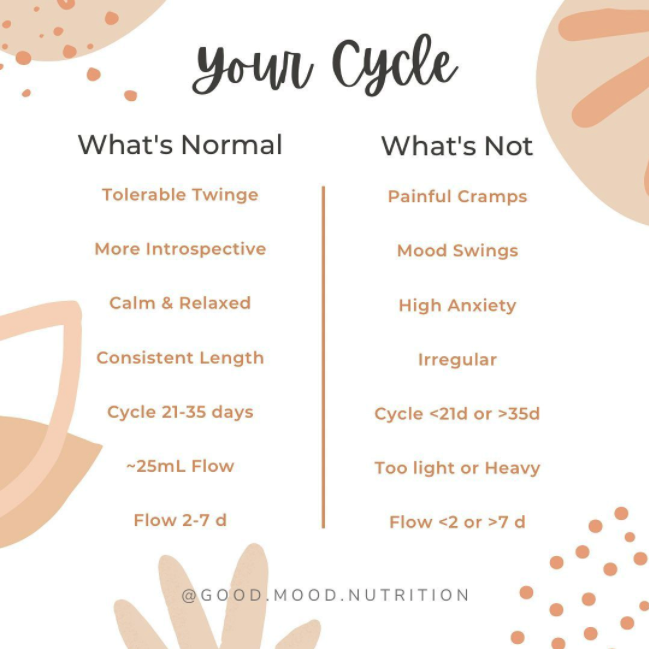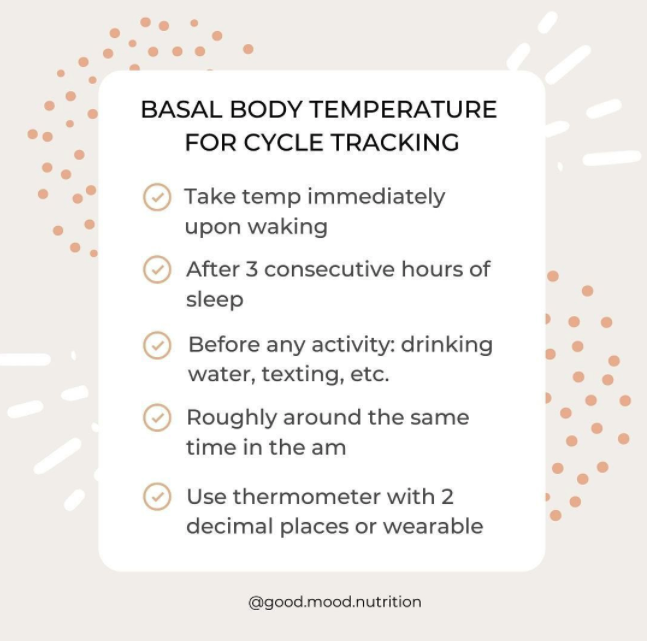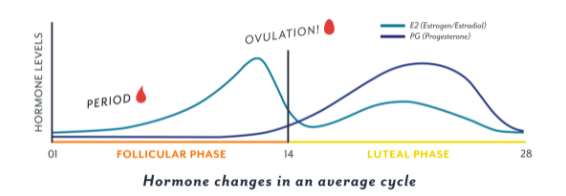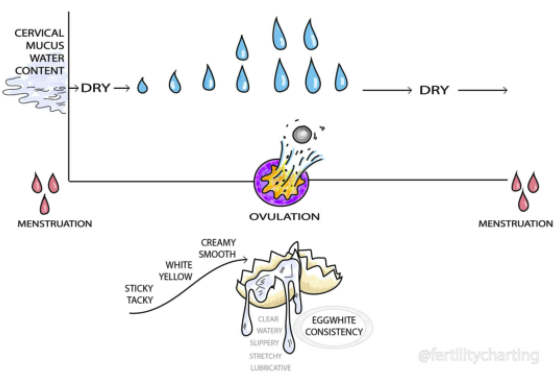Did you know that your cycle is actually a vital sign of your health? To give you perspective, the other vital signs are things like respiratory rate, blood pressure and pulse. Of course we won’t drop dead if our cycle gets wacky, but it’s literally THAT important for our physical and mental health. Wild right?! It’s because what goes on with our cycle tells us so much about our hormone health.
The first thing to understand about cycle tracking and hormone health is that we have normalized A LOT of symptoms- irregular cycles, being in pain/cramps, PMS, mood changes for up to 10 days before your period… I could go on.
In order to use cycle tracking for better “body literacy” and improving your health we have to realize that being really uncomfortable, in pain or feeling like a completely different person every month is common NOT normal.
Already overwhelmed before reading through this? I GOT YOU BOO. I have also made a video you can access here that will take you through the basics of cycle tracking. I get it, this is a big topic at first! I also recommend you check out the resources I have linked in this article.
Why We Care About Cycle Tracking:
❤️ Effectively and confidently prevent or plan pregnancy (so no need to shut off your hormones with birth control to prevent pregnancy, I promise its not rocket science!).
❤️ Really connect with and understand your symptoms based on what time of your cycle it happens. This “body literacy” is empowering AF.
❤️ Use your cycle as a vital sign/sign of your health status- so that when it is inconsistent, you can try to pin point what is happening lifestyle wise that isn’t working for you.
❤️ Look for signs of hormone imbalance that may warrant further testing and intervention.
❤️ Use your cycle to help you better understand what you need for self care, in social interactions and at work. Ie: follicular energy- more outgoing, creative, energetic, luteal energy- you need more rest and recharging.
A common compliant about cycle tracking is it can seem like a decent amount of data to keep track of, but I’ll teach you how to keep it as simple as possible.
Cycle Tracking Basics:
Start with what you will track with. I am a fan of plain ol paper charting, but most people prefer charting on apps.
My fav resources:
The Kindara App is my fav for tracking on your phone. Clients have also liked Ovia, and Clue.
Note: Turn off the predictive feature on the apps (especially to prevent or plan pregnancy), our cycles fluctuate sometimes and we are all different!
What to track:
Length of your cycle: From the first day of your period to the day before the next period. We want to establish what your “norm” is. We also don’t want to see your cycle fluctuating more than 2-3 days per month from that norm. In general a healthy cycle is ~21-35 days (see below).
Heavy, light or moderate flow? Normal periods use about 5 super tampons or pads/10 regular. Menstruation should be fluid mostly, no large clots.
Bleeding/Spotting in between periods? This can be a normal sign of ovulation or a sign of hormone imbalance, etc.
Pain/number of painkillers you are taking: Remember, its common NOT normal to be in pain.
Premenstrual symptoms and how long they last: irritability, depression, anxiety, headaches, acne, fatigue, breast tenderness, etc.
Sleep quality: This can change in the second half of your cycle if hormones are imbalanced.
Change in GI symptoms: Do they show up at certain times in your cycle? Are your typical symptoms exacerbated?
Unusual stress or illness that may disrupt your cycle: traveling, getting sick, a big surge in stress, etc.

Advanced Cycle Tracking:
For those of use that want to use cycle tracking as birth control and as a way to really understand our hormone fluctuations throughout the month.
It’s impossible to go through ALL the details of advanced cycle tracking for birth control, but I promise it’s easy to get the hang of it. Keep doing your research and check out the resources i’ve linked.
What to track:
Waking Temps: AFTER ovulation morning basal body temperatures increases by about 0.5 degrees F. We are looking for about 11-16 higher temp days in the second half of your cycle. This tells us that your body is ovulating and making enough progesterone for optimal hormone balance. See below for a sample graph and more on how to take your BBT.


Duration of Follicular and Luteal phases: Knowing the phases of your cycle helps us take that body literacy even further. We need different things for self care and nutrition throughout each phase.
The first phase is the Follicular phase- Day 1 of your cycle (including your period) until ovulation (around day 14 but different for every woman). In this phase Estrogen is is making its way up to its monthly high.
The Luteal phase is the second half of your cycle that happens after ovulation occurs. After ovulation, your body starts to make the hormone progesterone, which is supposed to dominate in this phase (if things go to plan!). Low Progesterone and anovulatory cycles are common hormone imbalances that cause symptoms we know and love like PMS.

Cervical fluid tracking: Do you ever wipe after going pee and notice its quite slippery? That’s cervical mucus. Another predictor of your fertile window before your temp increases. It basically tells us ovulation is coming and Estrogen is rising. Sometimes cerivcal mucus will come at weird and unpredictable times in your cycle. This could be an indication of an irregular cycle or that Estrogen is too high in your luteal phase.

My Fav Resources for Advanced Cycle Tracking:
BBT thermometer: The cheap and easy way to get started with temp tracking.
Temp Drop wearable temp tracker if waking up first thing and checking is not your jam. Use code goodmoodnutrition for 10% off.
Fertility Awareness Mastery Workbook: Great resource to learn more about cycle tracking in more depth and allows you to track your cycle on pen and paper.